1958 C1 Corvette Overview – The Ultimate Guide
By the late 1950s, the infrastructure of the automotive industry had begun a transformation from the monopolistic business of a few, large, corporate giants to a much more competitive and highly segmented marketplace.
A few small, relatively unknown companies from Europe were emerging, presenting competitively priced alternatives to the current American offerings, catching companies like Ford and General Motors completely by surprise. Volkswagen had introduced the Beetle and confounded the competition by selling 200,000 or more units per year. The introduction of this, and other “cheap” cars into the automotive market would forever change the direction of automotive marketing and would directly impact the future of the Corvette.
Despite the fact that the Corvette had yet to be profitable, General Motors management was certain that the design changes that Harley Earl had implemented in his 1956 redesign would continue to be the basis of design for future model years. Certainly, the 1957 Corvette had shown considerable improvement in its numbers over the 1956 model year and, if things continued to move in that same direction, the Corvette would certainly meet financial success in the coming year.
In addition, Corvette had managed to completely dominate on the racetrack and, despite the fact that General Motors would join others in observing the racing ban that had been put in place by the Automobile Manufacturer’s Association (AMA), it had proven nearly unbeatable in its class.
It is commonly believed that the Corvette had performed so well in open competition throughout 1957 that it had forced Ford to “throw in the towel” on its two-seater Thunderbird, forcing them to stall, GM engineers were entertaining thoughts of uni-body construction, while the styling staff was drawing inspiration from the design styling of the immensely popular Mercedes-Benz 300SL gullwing coupe.
Drawing on inspiration from both Earl’s ‘56 Corvette and the Mercedes-Benz, a new concept car emerged that was featured at the 1956 Motorama that nearly became the basis for an all-new Corvette. This car would go on to become known as the “Oldsmobile Golden Rocket”.
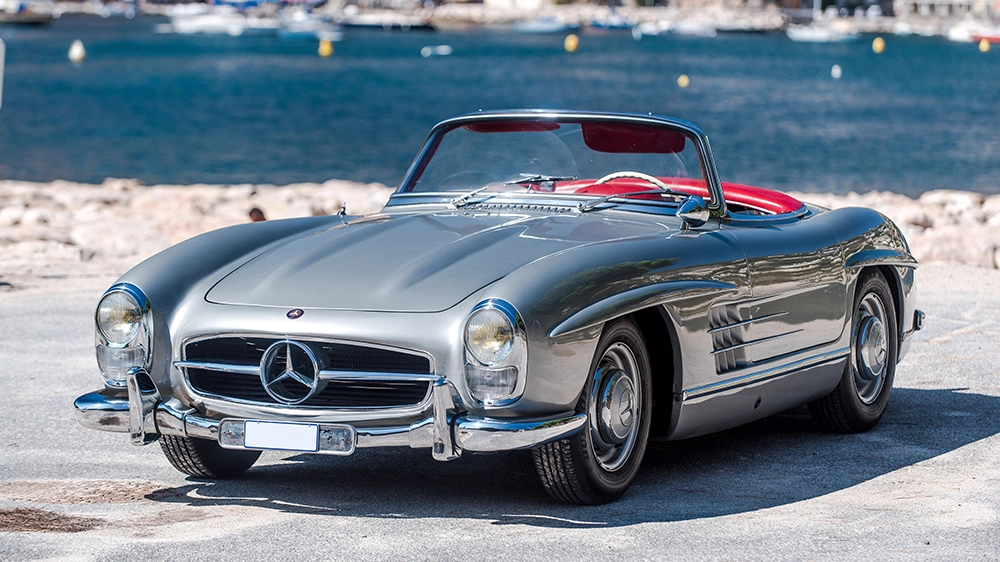
This “Golden Rocket” was a unit-body, two-seat coupe that sported futuristic styling that included a slim vertical grille and a protruding snout with quad headlamps – a style that was immensely popular among designers in Detroit.
The Oldsmobile’s front fenders swept back the length of the body to a torpedo-like rear end that was topped by small fins. Gullwing-like sections were cut into the roof assembly to allow greater ease when entering/exiting the car. Much like the rest of the car, the roofline also tapered back in a “boattail” fashion, with a large rear window that wrapped down and around the roof. In all, the “Oldsmobile Golden Rocket” would become commonly recognized as the inspiration for Bill Mitchell’s Corvette Stingray seven years later.
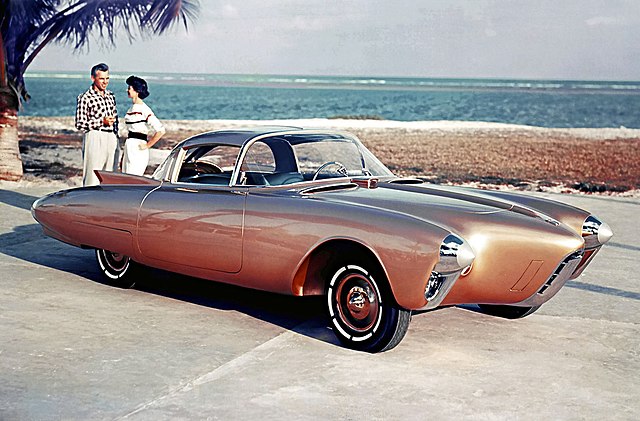
As early as 1946, General Motors executives had come to a consensus that unit-body construction would be the path forward for cheaper unit cost and higher volume, both of which were items that Corvette needed to begin turning a profit. Using the Oldsmobile concept car as a model, engineers began laying out a new Corvette based on the Golden Rocket’s styling.
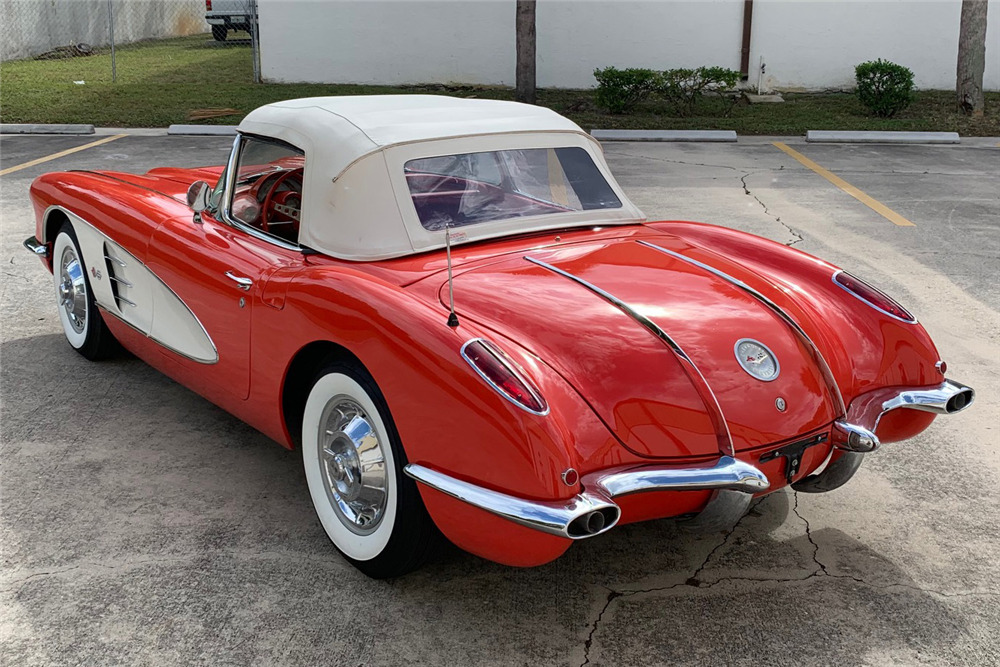
Early models made of clay and fiberglass showed how unit body construction might help pave the way for a whole new era of Corvettes. Smaller and lighter than the current C1, it also compensated for many of the current design constraints that current Corvette engineers were forced to deal with. However, this first pass at a new Corvette design never completely got off the ground. The project, which carried the name Q-Corvette, ended up getting shelved as members of the Concept Corvette development team were pulled away to other projects that demanded the attention of those who could best help in the ever-increasing sales race against Ford.
As far as the 1958 Corvette was concerned, the car would have to settle for a facelift.
From the standpoint of appearance, the 1958 Corvette was far more excessive than any of it’s predecessors. While the car still reflected the design changes implemented in the 1956 and 1957 models, the ‘58 Corvette now sported simulated louvers on its bonnet(hood), nonfunctional air intake scoops on either side of the grille, and phony vents in the bodyside “coves”.
It also featured twin, chrome “suspenders” that ran from the base of the rear window down the trunk lid, before ending abruptly at the rear fender. Another notable departure from the earlier models was the addition of quad headlamps wrapped in a thick chrome bezel.
DID YOU KNOW: As early as 1958, Chevrolet began developing the XP-700 Corvette as a prototype for the second generation ‘Vette. This concept model Corvette featured many styling elements that GM’s new design Chief, Bill Mitchell, believed would represent the future of the Corvette.
Much like the chrome “suspenders” featured on the trunk lid, chrome stripran along the tops of the fenders, accentuating the appearance of the headlamps and giving an overall “swept back “ appearance. Lastly, the chrome “teeth” in the front grille itself were reduced from thirteen (as had been the standard in all Corvettes prior to 1958) to only nine. The 1958 Corvette not only looked heavier with it’s many new additions and design changes, but it had actually gotten heavier.
For the first time in Corvette history, the car exceeded 3,000 pounds, which was an increase of 200 pounds over the 1957 model. However, the increase in weight was not merely due to the excesses that were included in the car’s makeover but was the result of the increased size of the car. The 1958 Corvette had 9.2 inches of added length and 2.3 inches of added width, bringing the car’s overall dimensions to 177.2 by 72.8 inches.
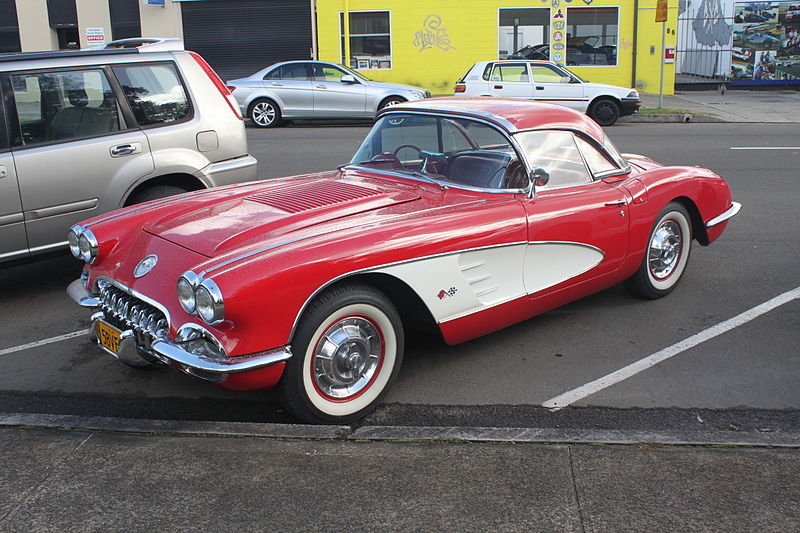
Because of the increase in weight and size, the Corvette would require the addition of radius rods to the rear suspension, which would help offset some of the behavioral issues the car experienced under hard acceleration conditions.
While the exterior revisions to the 1958 Corvette exuded excess from almost every angle, the interior revisions to the car were no less substantial, although they were better received. A significant redesign of the instrument cluster at the request/direction of Zora Arkus-Duntov resulted in all of the gauges (save for the clock) to be placed directly in front of the driver in a binnacle.
After the repeat criticisms of instrument placement in earlier models, this change seemed only natural to the Corvette’s design team. The new cluster consisted of a 160-mph speedometer which dominated most of the dashboard, while a smaller 6000 rpm tachometer was placed ahead of it on the steering column.
Flanking the tachometer on each side was a pair of standard instrument gauges that monitored fuel levels, oil pressure, engine temperature and battery charge.
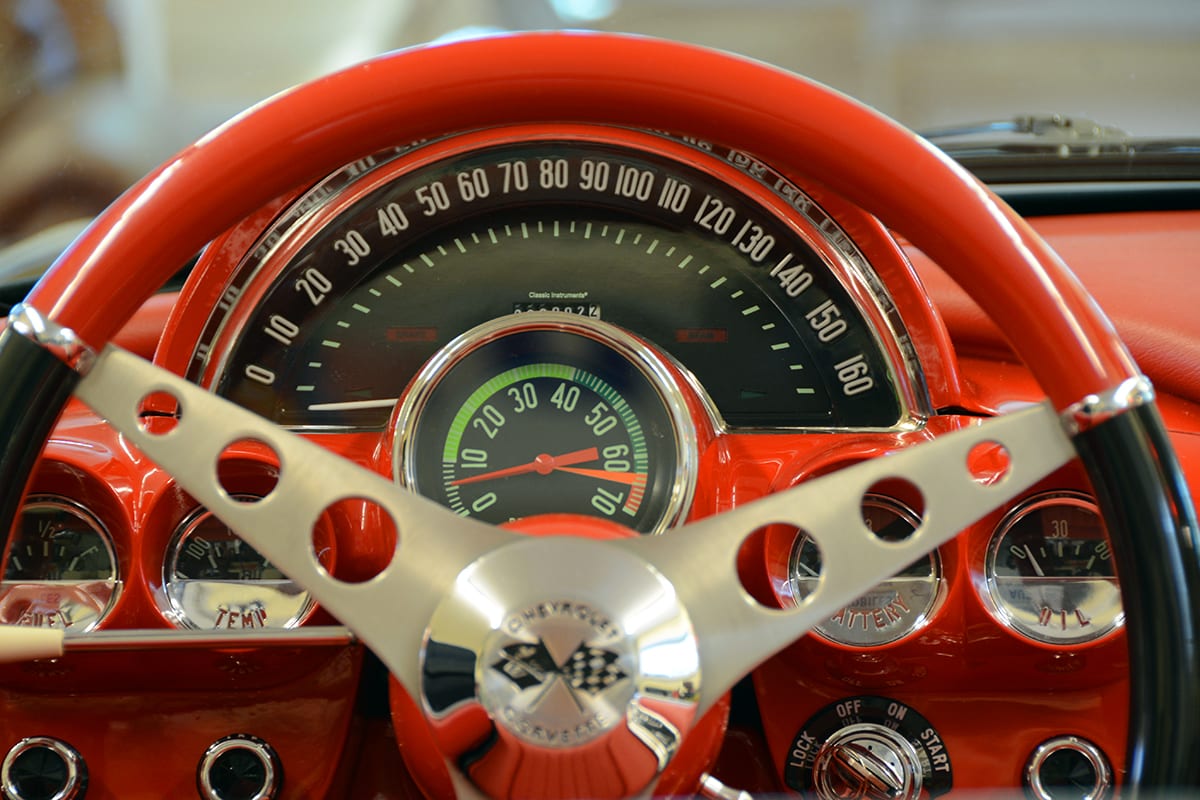
Emerging from the dashboard and mating with the center console was a narrower, vertical console which housed the heater controls, the clock and an optional “Wonder Bar” signal-seeking radio.
While relatively unique for it’s time, this arrangement of controls was virtually identical to the standard layout in automobiles today. The passenger side of the dashboard featured a grabbar mounted in front of a semicircular dashboard that was cut away from the bar itself, allowing passengers to “hold on” in the event of a sharp turn or during sudden acceleration. A locking glove compartment was fitted between the seats just below the release button for the convertible top.
Other changes were made to the interior as well. The interior door panels were remodeled to include reflectors that had been added at arm level for nighttime safety. Upholstery now featured a new “pebble grain” fabric. Even seatbelts, which had been practically unheard of before that model, were standard issue – factory installed in the 1958 Corvette.
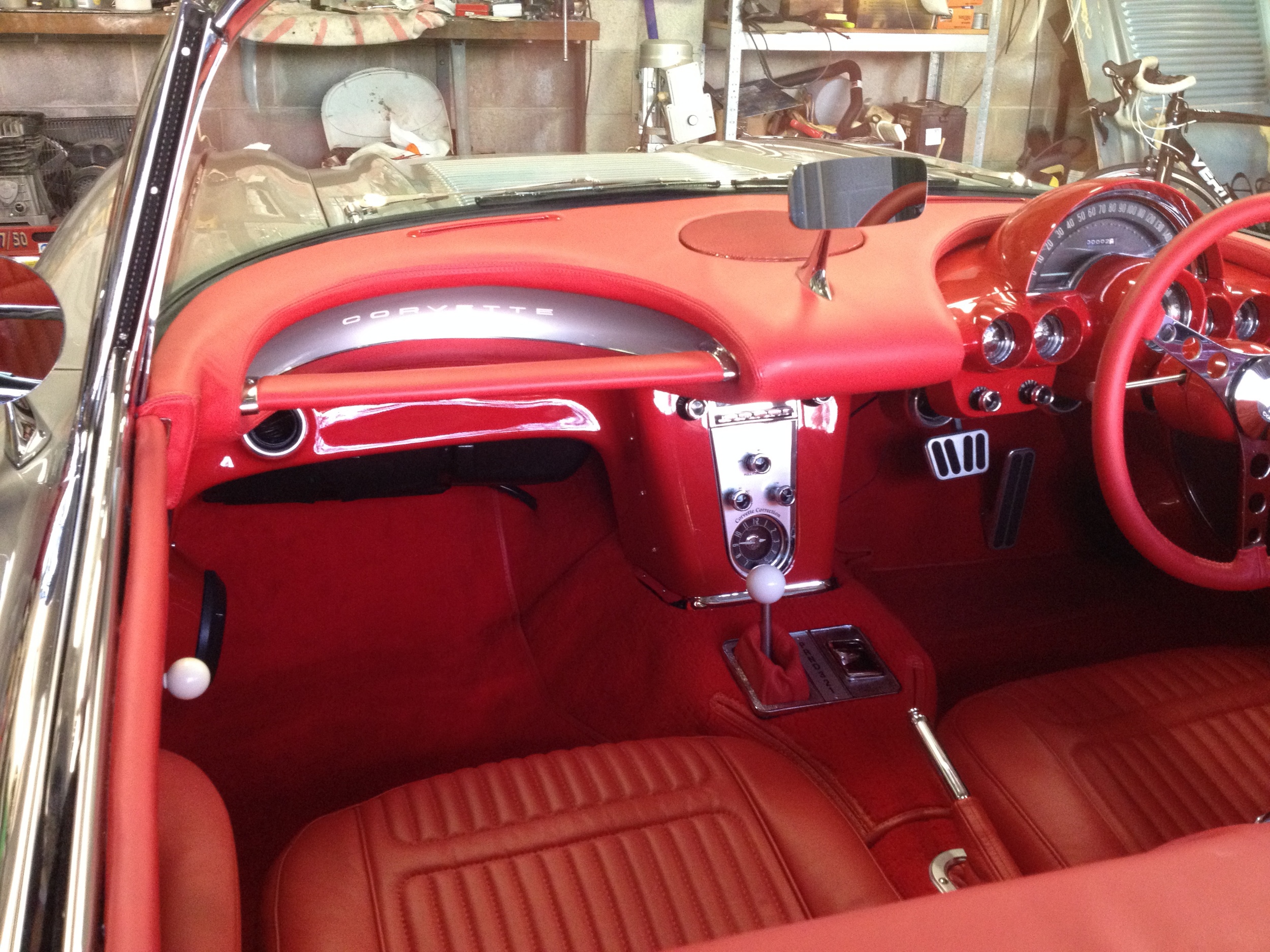
Regardless of personal opinion surrounding the 1958 Corvette’s appearance, there were no questions what the performance factor would be. Nearly unchanged from the 1957 Corvette, the ‘58 continued to utilize the 283 engine. Now officially rated at 290 horsepower (at 6,200 rpm’s), the fuel injected, Duntov-cam 283 continued to flourish beneath the hood of the 1958 Corvette as the top level engine for that year’s model run. Similarly, a twin carburetor version of the engine continued to be offered as an option, offering drivers an uncompromising 270 horsepower engine. Despite this fact, few buyers opted for the carbureted version of this engine. Surprisingly, it was the base level 230 horsepower V-8 engine that buyers sought out.
This base model engine was installed in nearly half of the 1958 models. Only 1,500 Corvettes were actually fitted with the fuel injection option, and of those only 1,000 featured the 290 horsepower setup, the other 500 belonging to the 250 horsepower version of the Corvette.
For those enthusiasts that had continued to demand uncompromising speed and performance after the introduction of the 1958 model, Chevrolet continued to offer a near race-ready version of the Corvette, which they made available at local dealerships across the country – and at prices that made buying even the highest end Corvette affordable.
With upgrades ranging from a high performance, 290 horsepower, fuel injected engine, Positraction, heavy-duty metallic brake and suspension and a four speed manual transmission, the total difference in cost between the base priced Corvette and it’s racing counterpart was about $1500.00.
Considering that these upgrades allowed the ‘58 Corvette to rival such competitors as Jaguar, Ferrari and Porsche, there was no question that Corvette was the best performance for the price. It is reported that Corvette’s which were built to include the aforementioned upgrades came with a warning label on their windshields that stated “This car is not intended for street use.”
Production Numbers
Despite some of the extreme changes to it’s body styling, the 1958 Corvette was the first vintage of Corvette to turn a profit for General Motors. In all, Chevrolet sold 9,168 Corvettes in the 1958 model year, which was doubly impressive when considering that the Corvette sales were up (47% over the 1957 Corvette and a staggering 150% over the 1956 Corvette) despite a year in which a financial recession had wrought havoc on the competition, leaving few manufacturers to actually turn a profit that year. In fact, save for Ford’s new four-seat 1958 Thunderbird (and very few others), Corvette alone proved successful in the domestic automotive market.
1958 Corvette Specifications & Performance
See the complete breakdown of technical specifications for the 1958 Corvette, including engine, suspension, brakes, body dimensions, and power.
Read more: 1958 Corvette Specifications.
1958 Corvette Vehicle Identification Numbers (VIN)
1958 Corvette Price & Options
Core Features & Factory Options
Colors
The colors for 1958 included Charcoal (1,631 units and 17.79%), Snowcrest White (2,477 units and 27.02%), Silver Blue (2,006 units and 21.88%), Regal Turqoise (510 units and 5.56%), Panama Yellow (455 units and 4.96%), Signet Red (1,399 units and 15.26%), Tuxedo Black (493 units and 5.38%) and Inca Silver (193 units and 2.11%).
Pricing
At $3,591, the 1958 model was just over $400 more expensive than the base 1957 models – not bad considering the added body mass. Moreover, it was great compared to the cars it was competing with such as Jaguar and Porsche. Best of all, the new performance of the Corvettes could now keep up with these European sports cars the Corvettes were designed to compete with in the first place.
| CODE | DESCRIPTION | QUANTITY | RETAIL PRICE |
| 867 | Base Corvette Convertible | 9,168 | $3,591.00 |
| 101 | Heater | 8,014 | $96.85 |
| 102 | AM Radio, signal seeking | 6,142 | $144.45 |
| 107 | Parking Brake Alarm | 2,883 | $5.40 |
| 108 | Courtesy Lights | 4,600 | $6.50 |
| 109 | Windshield Washers | 3,834 | $16.15 |
| 276 | Wheels, 15 x 5.5 (5) | 404 | $0.00 |
| 290 | Whitewall Tires, 6.70 x 15 | 7,428 | $31.55 |
| 313 | Powerglide Automatic Transmission | 2,057 | $188.30 |
| 419 | Auxiliary Hardtop | 5,607 | $215.20 |
| 426 | Power Windows | 649 | $59.20 |
| 440 | Two-Tone Paint Combination | 3,422 | $16.15 |
| 469 | 283ci, 245HP Engine (2×4 Carburetors) | 2,436 | $150.65 |
| 469C | 283ci, 270HP Engine (2×4 Carburetors) | 978 | $182.95 |
| 473 | Power Operated Folding Top | 1,090 | $139.90 |
| 579 | 283ci, 250HP Engine (Fuel Injection) | 504 | $484.20 |
| 579D | 283ci, 290HP Engine (Fuel Injection) | 1,007 | $484.20 |
| 677 | Positraction Rear Axle, 4.56:1 | 1,123 | $48.45 |
| 678 | Positraction Rear Axle, 4.11:1 | 2,518 | $48.45 |
| 679 | Positraction Rear Axle, 4.56:1 | 370 | $48.45 |
| 684 | Heavy Duty Racing Suspension | 144 | $780.10 |
| 685 | 4-Speed Manual Transmission | 3,764 | $215.20 |
Read more: 1958 Corvette pricing and factory options.
1958 Corvette Gallery
Though the 1958 Corvette was bigger than the 1957, the actual styling didn’t change substantially. The main visual distinguishing factor between the 1958 and 1959 models was the lack of the hood louvers, which many critics felt was a great move by Chevy. See full 1958 Corvette Image Gallery


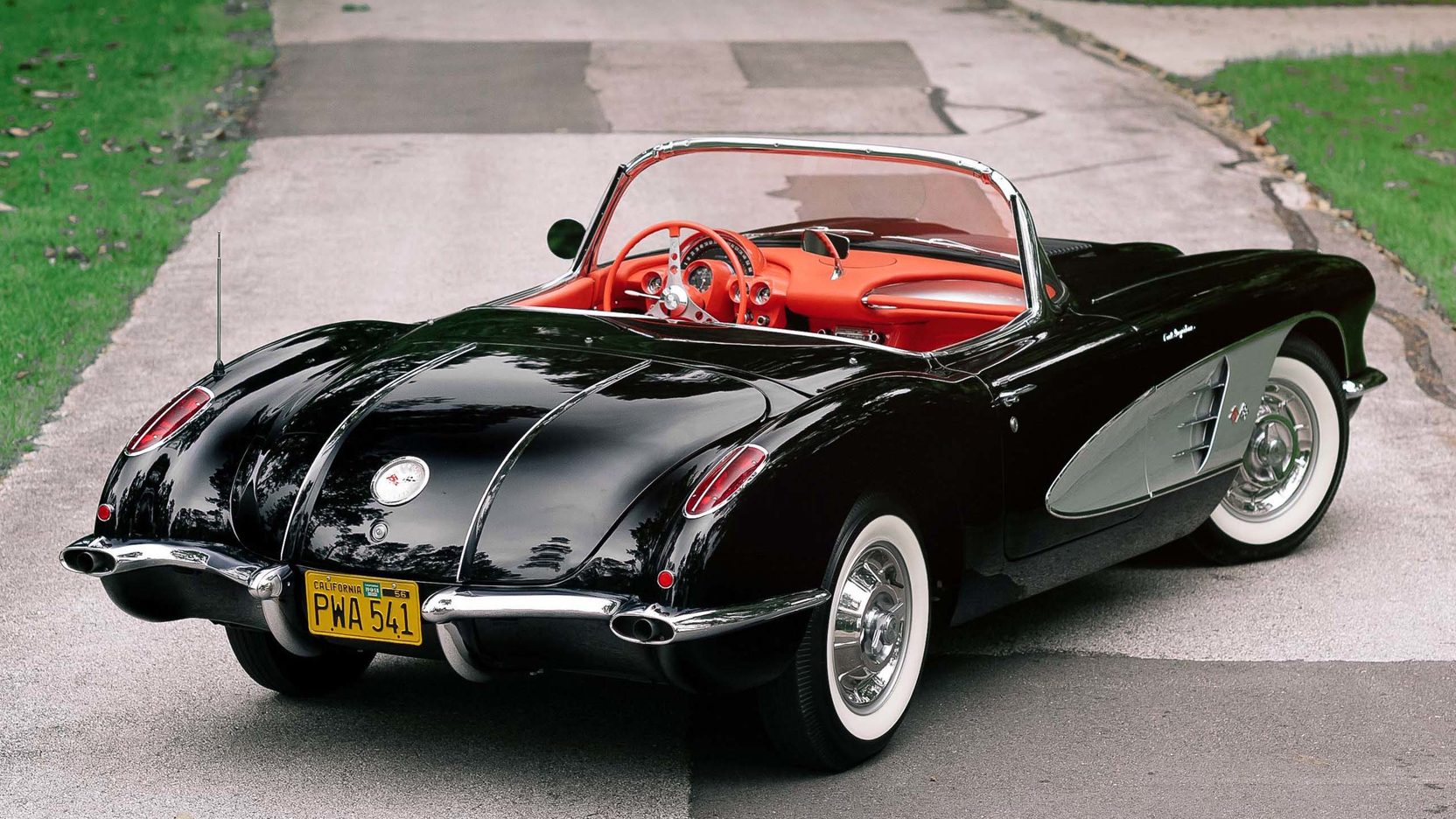
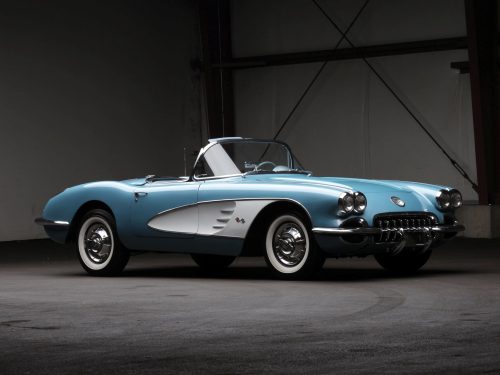

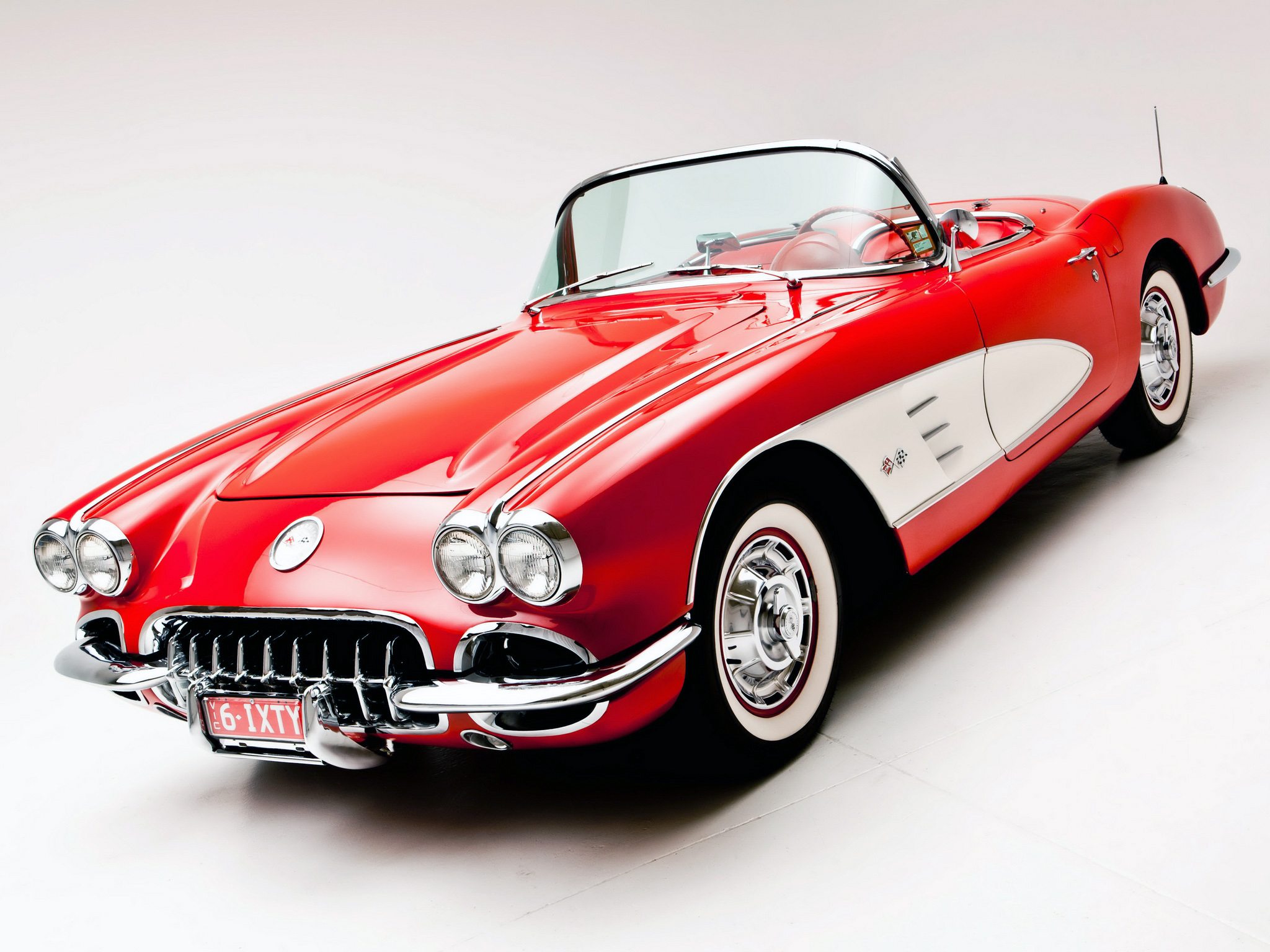
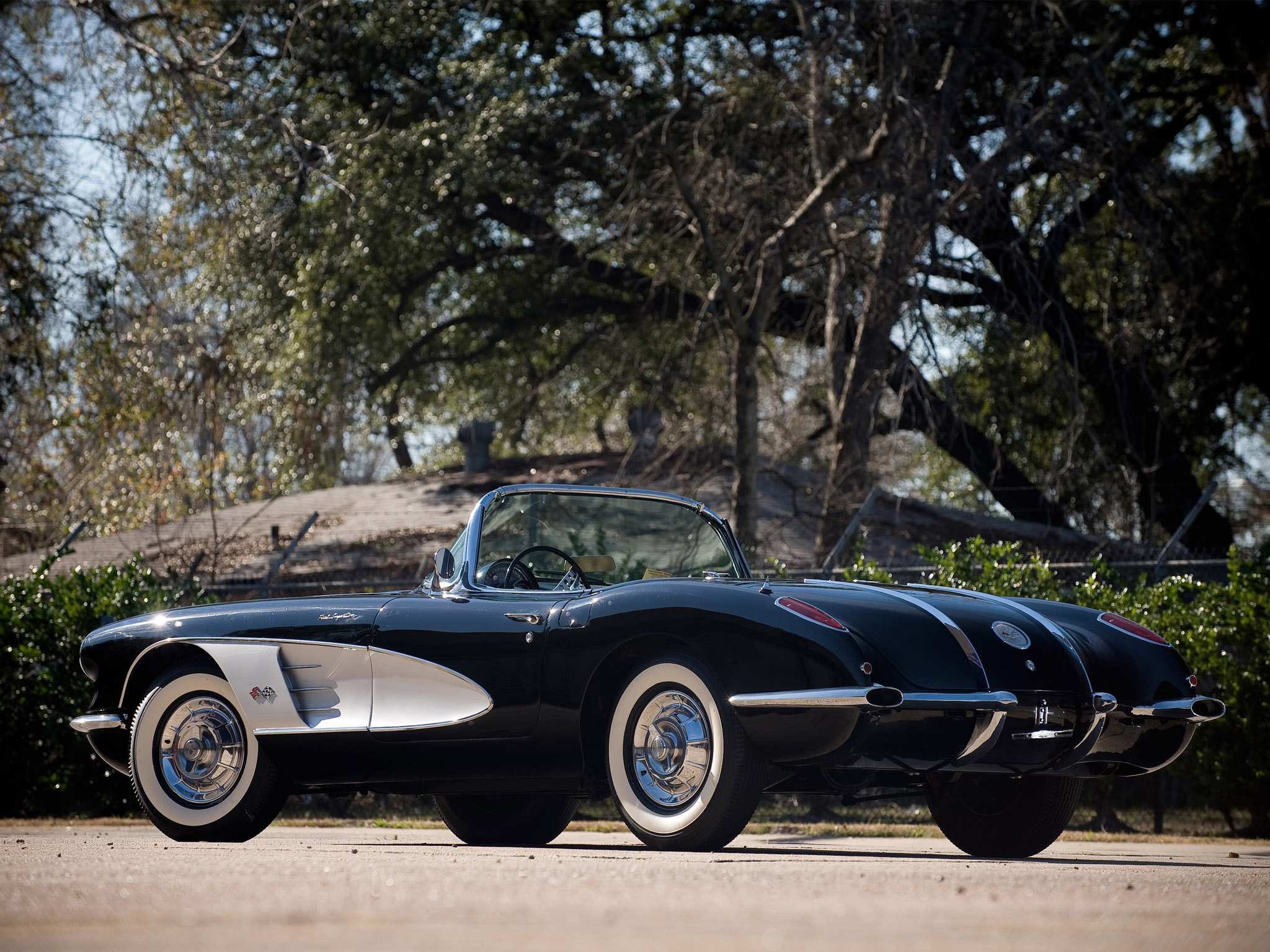
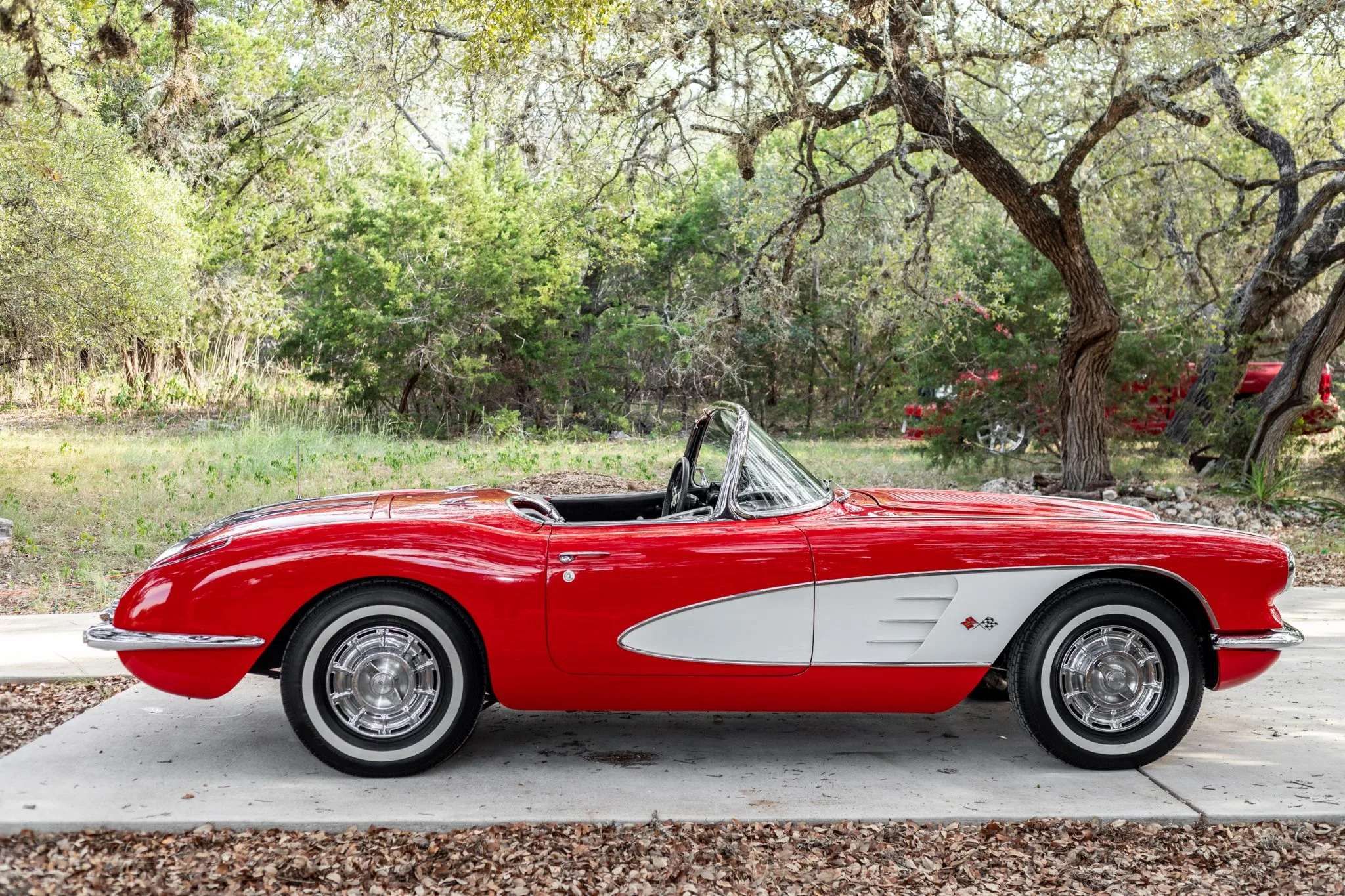
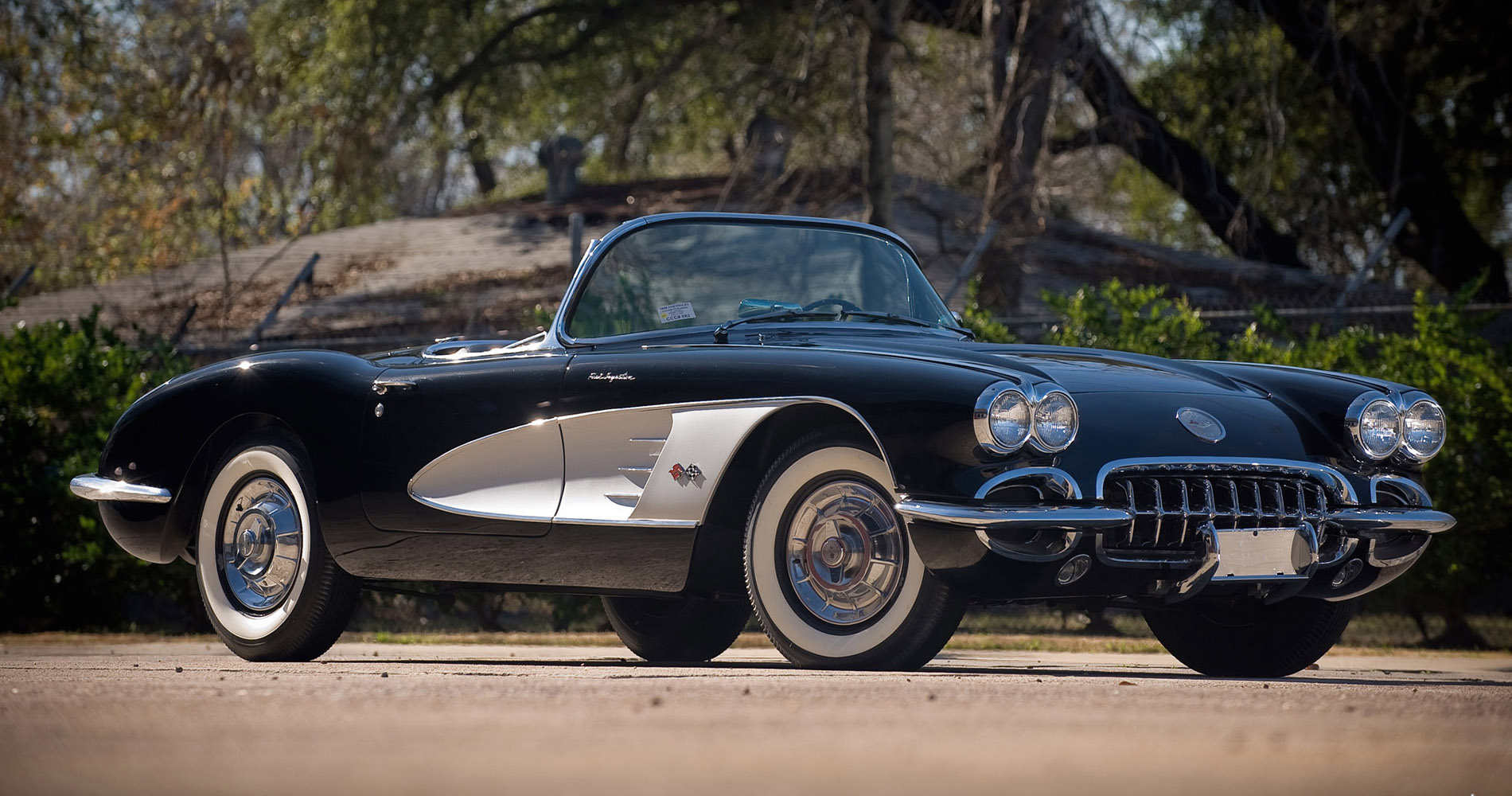
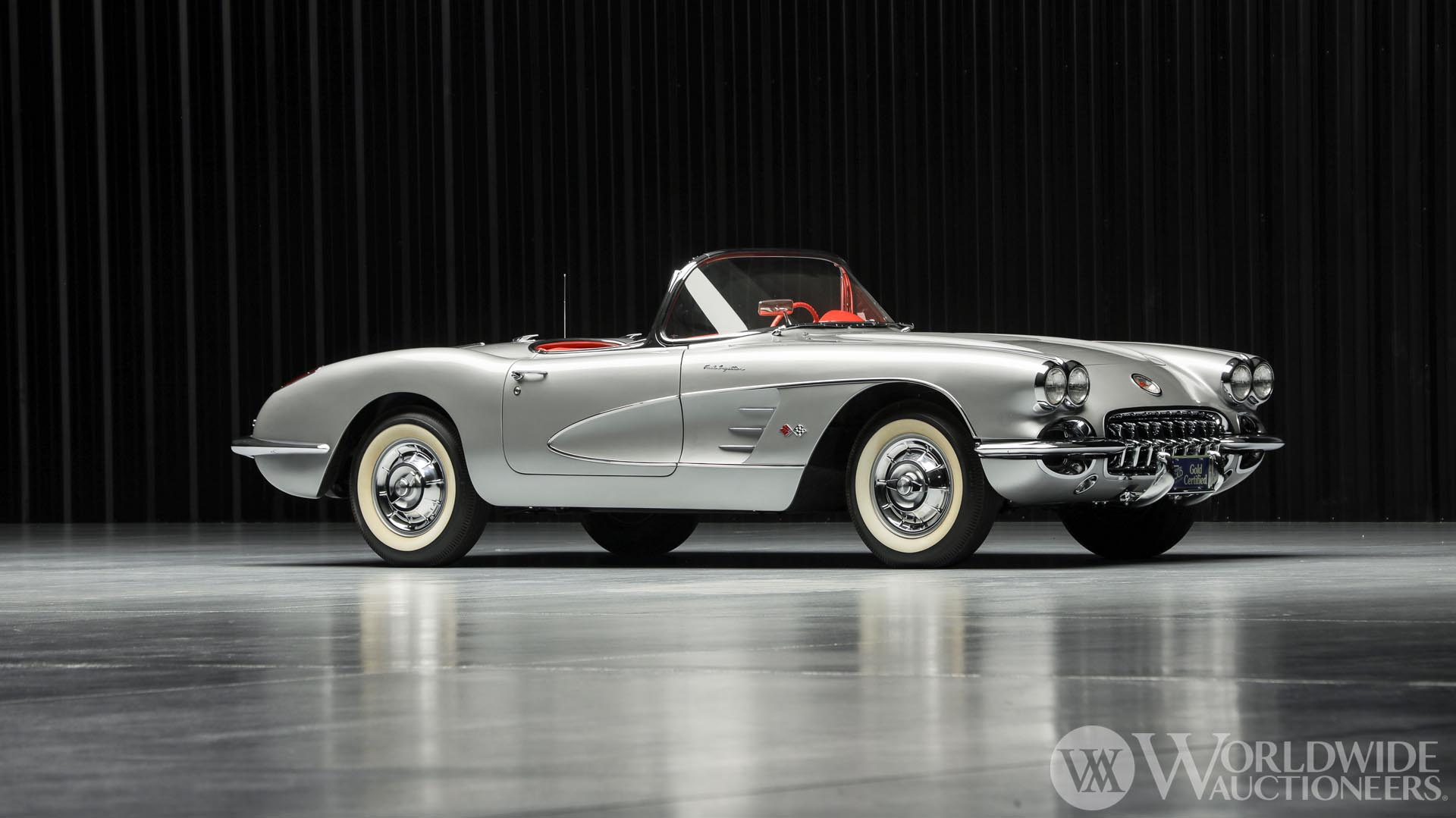
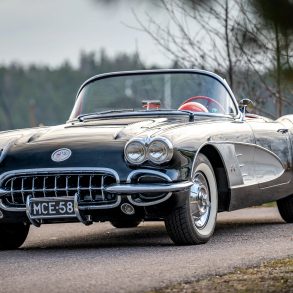

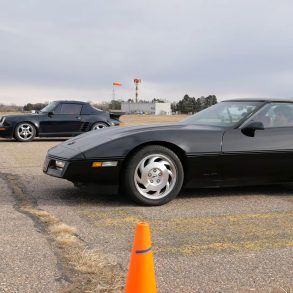
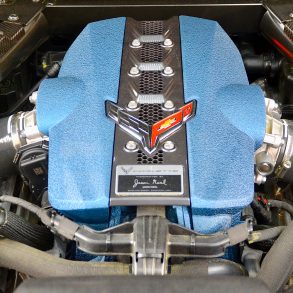
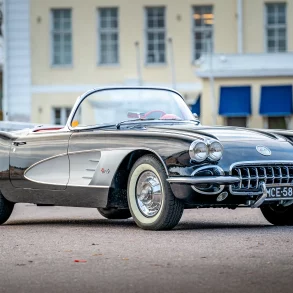
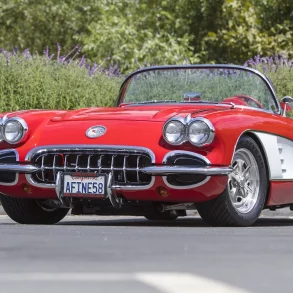
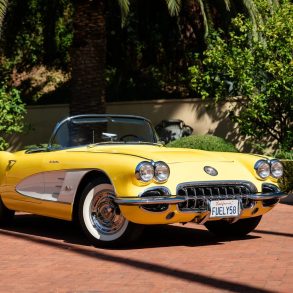


No one seems to EVER KNOW what EXACT carpet originally came with a Silverblue58vette with inca silver inserts. EVEN AL KNOCH has varied replies. PLEASE let me know the Color,Style, and any other variations, options of this type {carpet}, and or reliable information~sites,etc. to be sure to get the correct kind without all of the idiotic substitutions that were/are supposed to be CORRECT! Your site seems to be VERY COMPLETE AND EXTREMELY INFORMATIVE for us longstanding owners, (40 years+) Thanks in Advance: Respectfully; S.D.
Hi, Does anyone know what was the transmission‘ casing made of on ‘58? I’m finding conflicting info but haven’t been able to find aluminum casing that many sources claim ‘58 had on their t10. No pictures, no ‘sold’, nothing. Not talking about tailing but the main case. Only finding cast iron with matching dates, but most info sources claim it supposed to be aluminum for ‘58. From ‘57 up until ‘61 I believe. You have the most complete info I’ve seen so far on vettes, but still no material for transmission casing. Any idea? Thank you in advance
58 t-10 aluminum casing. What do you want to know I’m looking at one for sale with the motor
My 58 has a 4-speed dated Dec. 1957 has a cast iron case and aluminum tailshaft.
I have a 1958 serial number in the 2000 thousand range. The 4 speed case is cast iron with an aluminum tail shaft the cast date on the case is October 1957.
Hi guys,
I have a Regal Turquoise with the 2 x 4s Carter’s and 270 hp. It’s my baby.
My quest to know how many were made that year in this config still eludes me.
A total of 510 units were made in Regal Turquoise. Of those, 200 were fuel injected.
So of the balance 310 units, how many were single carb versus dual quads??
If anyone knows I would love to carry that info.
Thanks